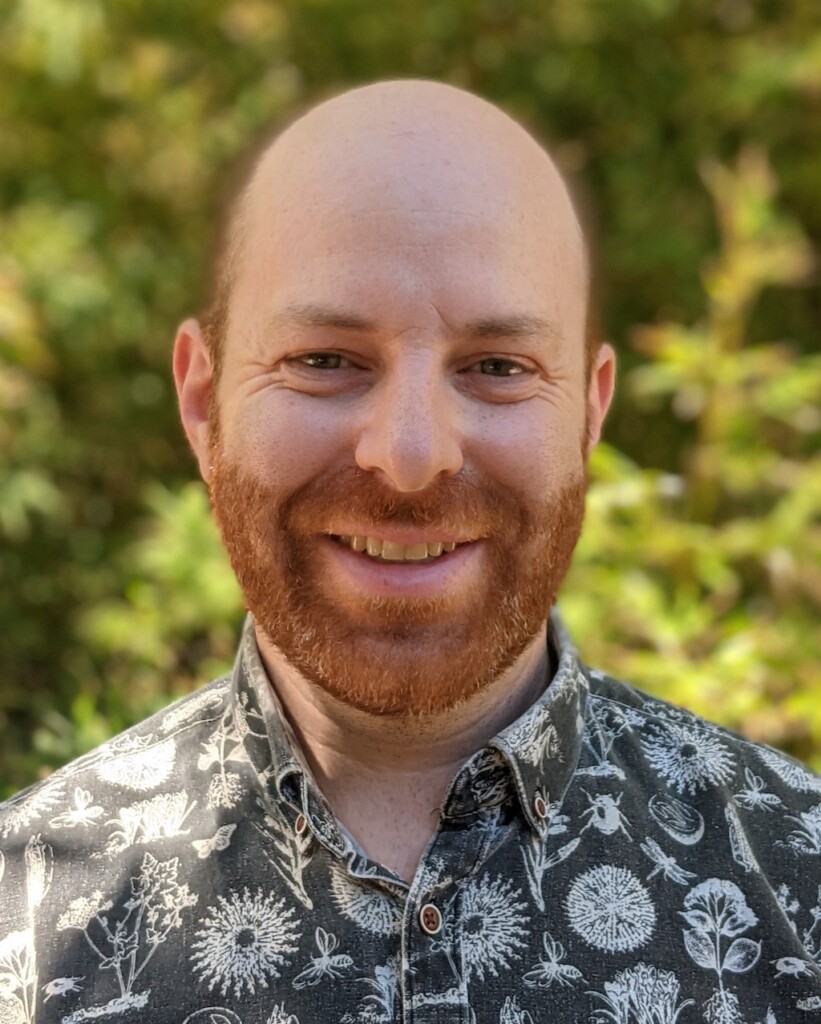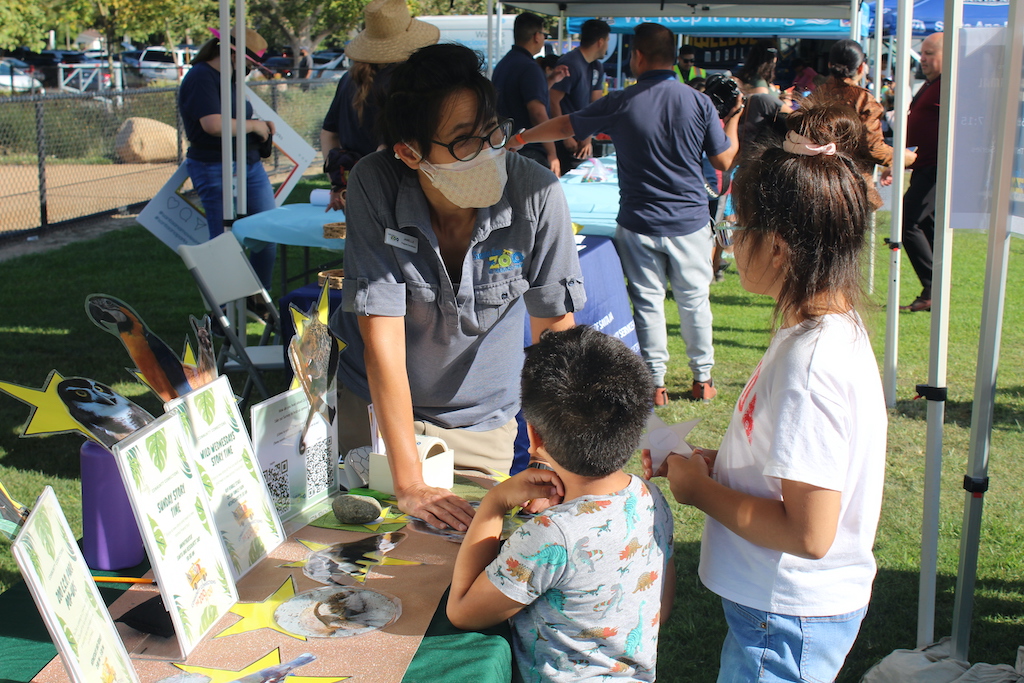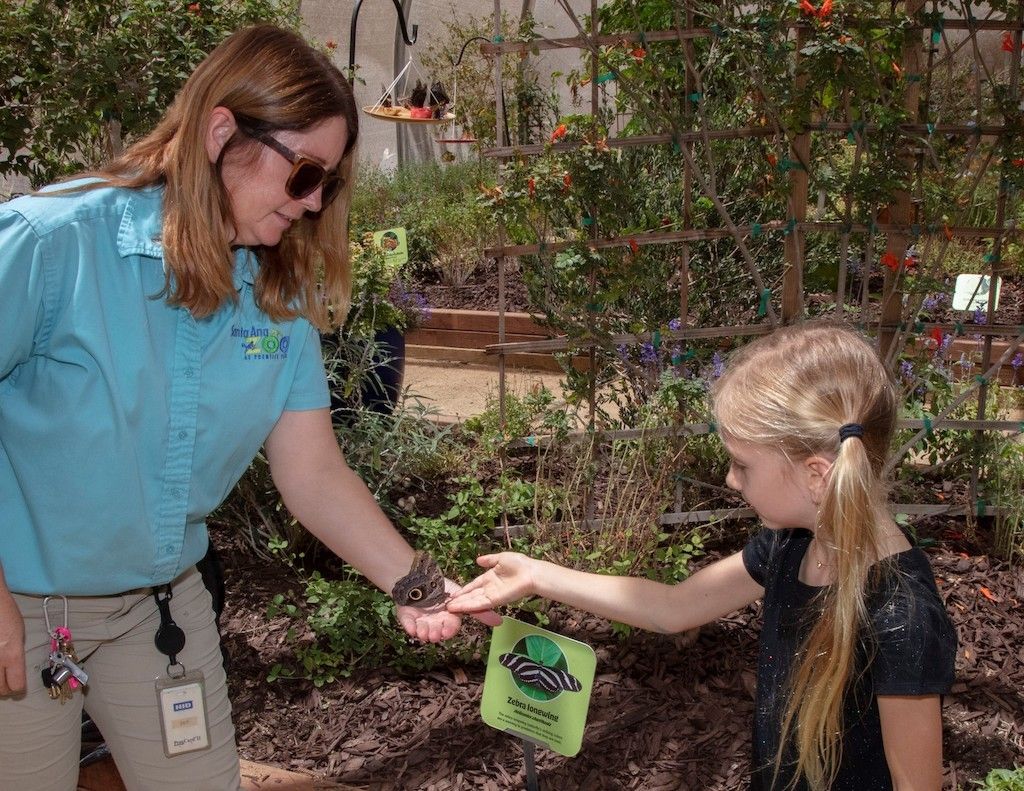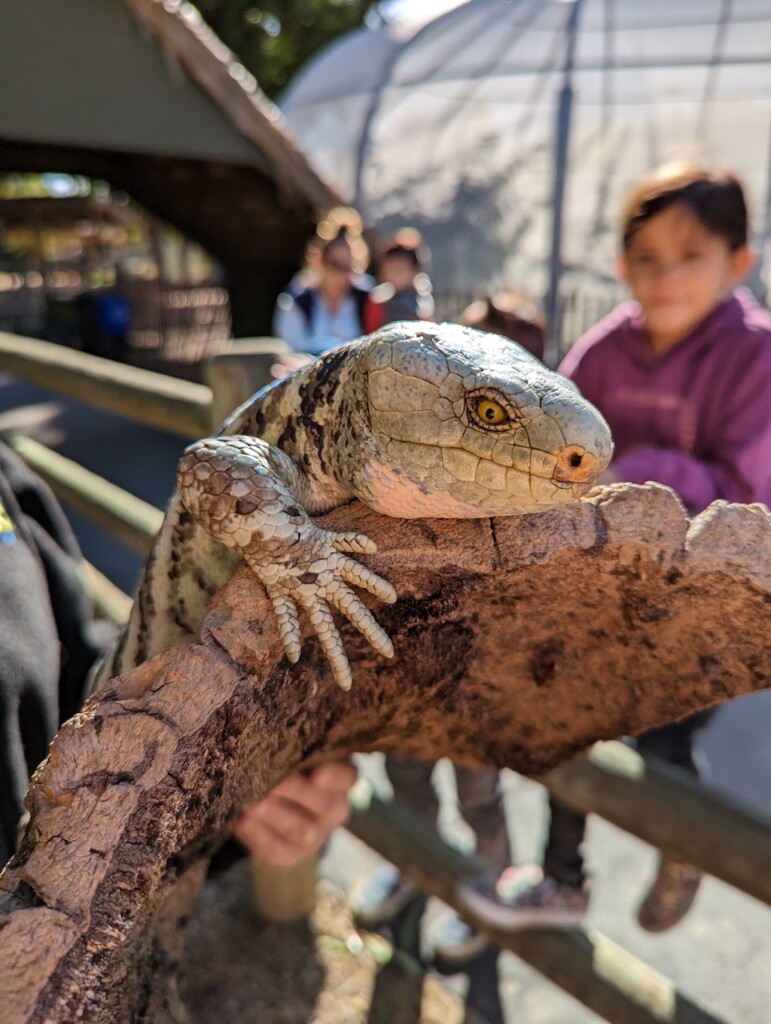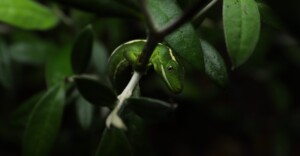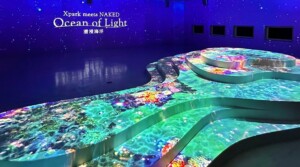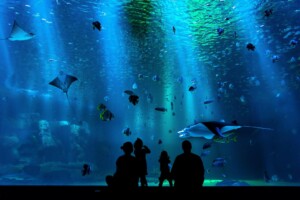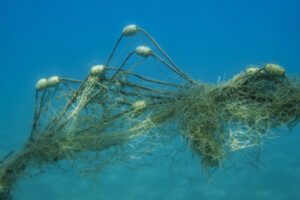Santa Ana Zoo at Prentice Park in California has been a rich resource for its community for over 70 years. Owned and operated by the City of Santa Ana, and with additional support from the non-profit entity, Friends of Santa Ana Zoo, the zoo averages 240,000 annual visitors.
The zoo opened in 1952; over the past seven decades, a visit to the Santa Ana Zoo has become an essential part of every childhood in the region. During this time, the zoo has evolved from being predominantly a place of recreation to one of education, conservation, and inspiration. With each visit, people leave not just with a better understanding of the complexity and interdependence of nature and the extraordinary diversity of life but are also inspired to find ways of making the world more environmentally harmonious.
In 2022, Santa Ana Zoo broke ground on its new giant river otter habitat and primate trails expansion, which is part of its Amazon’s Edge exhibit. This $6.6 million project is the first phase of a $70 million master plan.
Ethan Fisher, director of Santa Ana Zoo, has over twenty years of experience working in zoos and botanical gardens. Cat Decker, executive director at Friends of Santa Ana Zoo, has a broad business background, having developed her skills from previous positions at Disneyland, Knott’s Berry Farm, SeaWorld and her director’s position with one of the largest animal rescue non-profits in Southern California.
They spoke with blooloop about the zoo, its evolution, and the master plan.
An appreciation of nature
“I started with an interest in conservation, wildlife and nature quite a long time ago,” Fisher begins. “When I grew up, I was always around wildlife. We always had tropical fish growing up, and my family and my siblings were interested in reptiles and amphibians. We would go out and look for critters and would bring them home and learn about them. I was always around plants and, and animals, so I think that’s definitely where an appreciation of nature came from.”
Additionally, he says:
“I was also interested in photography and art, so it was nice to go out and take pictures of wildlife. It just evolved from there. Going further, I volunteered at the zoo, just as Cat has.”
In fact, he adds:
“It’s something we still offer the community at the zoo, so young people can come and volunteer. Engagement at that young age is so valuable. I even went to zoo camp. Those different touchpoints throughout my life have definitely played a role in shaping where I’ve gone professionally.”
Planting strategies at Santa Ana Zoo
He did a bachelor’s degree in biological sciences, then an academic certificate in business operations:
“I’m now just finishing a degree in landscape architecture,” he adds. “I’ve discovered I really do like creating spaces for people in the environment. I’m also interested in how you can use landscape architecture to help with climate change through urban forestry, and the different types of trees we need to start planting in order to mitigate those effects. The things that we have planted for the last 200 years might no longer be as appropriate as they were once. So, we need to look at other options. I’m really interested in learning more about that as the whole industry and community start to turn their focus.”
There is a planting strategy at the zoo. He explains:
“We’re trying to stay up to date on what the science and what researchers are saying, and to incorporate new species into the zoo so that we’re planting good, climate-adapted species going forward.”
A passion for animals & a talent for fundraising
Cat Decker, similarly, grew up surrounded by animals.
“My parents were big animal and wildlife lovers. There are pictures of me with animals, especially cats, all over me,” she says. “My mom would let the neighbourhood cats in. I grew up with animals and birds – we always had birds.”
Her love of birds led her to volunteer at the zoo, after studying communications and visual arts at the University of California San Diego (UCSD):
“I had a rescued Amazon parrot that had chewed his feet off. It was so sad. We built a special case for him and helped him to live a long life. I came to the zoo wanting to work in the aviary and, like Ethan, to help with the animals. I had done cat rescue, and an internship at SeaWorld in San Diego.”
While her initial intention was to volunteer at the zoo’s aviary before, perhaps, going on to work with birds, she explains:
“I found out that I had talents in other areas, like fundraising, so I thought, ‘I’ll raise money for the animals. That’s how I can help.’ That has been my main focus at the zoo – establishing what revenue generators we can bring in with operations, and how I can work with the board members and with the finances to help raise funds that way.”
Santa Ana Zoo: serving the community
Decker and Fisher are a good team, she says:
“It’s a good balance. Ethan is such an expert on wildlife and horticulture, and I like to think I can bring the donors in that can help fund that for the zoo.”
The zoo is an invaluable resource:
“We are so lucky to have the zoo here in the middle of Orange County. It’s such a great escape from everything else; it’s magical, and there’s really no other place like it. I spend a lot of time there. It’s wonderful to see families coming in, and how much they love seeing and learning about the wildlife.
“We’ve both been here around 22 years, if you count the time spent volunteering. We’ve lived through a lot of changes, and have learned what works and what doesn’t. I just feel really lucky and honoured to have been here this long, and to have got to this point.”
70 years of Santa Ana Zoo
The zoo celebrated its 70th anniversary in 2022.
The Santa Ana Zoo first began when Santa Ana resident and businessman Joseph Edward Prentice donated twelve acres of his citrus ranch to the City. His main interest was in monkeys; the nickname of ‘the monkey zoo’ lingers in the community to this day.
Construction began in 1951; the Prentice Park Zoo opened in March 1952 with 17 exhibits. Today, the zoo sits in a dense urban setting with residential developments on most sides, an urban forest and an oasis in the city.
In 2018 the City of Santa Ana approved new facilities and a strategic master plan for the zoo, designed in partnership with CLR Design and Zoo Advisors [now known as Canopy Strategic Partners]. The master plan continues to honour the zoo’s heritage with primates. It focuses on four key habitat zones: a forest zone, a grassland zone, a riverine zone, and a farm/adventure zone. The first major project in the master plan is the redevelopment of the Amazon’s Edge Exhibit with enlarged primate and giant river otter habitats.
Explaining how the master plan achieves the zoo’s mission in practical terms – to empower the community to save wildlife and wild spaces through fun, adventure, and learning – Fisher says:
“We wanted to work with a firm that knew zoos and knew the community, and so could do a good assessment of what has developed over the past 70 years, then make a realistic plan going forward. Master plans can sometimes be very aspirational, almost to the point that the proposed building never gets done. You see these concept renderings for things that are going to cost 500 million. We knew that wasn’t realistic; we wanted to focus our dollars on actually doing something.”
Developing a master plan
The firm he brought in was award-winning zoo design architects CLR Design
“They’re a great firm with a great track record of successful projects in the United States,” he says. “We brought them in as a partner. They did a thorough analysis of the facility, and of what we wanted to do. We knew that with our small size – only 20 acres – we needed to be very strategic about how we laid things out.”
The previous master plan, developed in 1990, had focused on the animals of Central and South America. He comments:
“It’s a nice story, but a little bit limiting, too, especially given our small size. We changed the focus a little bit to these different biomes. Then we looked at how the animals layered into that.”
One of the first projects to be tackled was the Giant River Otter habitat, which broke ground last January. Another key element, the Primate Trails & Forest, is adjacent to the Giant River Otter zone. This will provide new naturalistic exhibits to meet contemporary zoo standards, and complement the existing Colors of the Amazon Aviary and the new Ocelot habitat:
“Next, we’re looking forward to constructing an education building,” Fisher says.
A focus on primates at Santa Ana Zoo
The redevelopment of the primate forest is a major capital focus:
“It’s the only area of the zoo that is still, effectively original,” he adds. “It needs to be redeveloped, and that’s where Cat and I are focusing right now. We are looking at building a unique habitat system that includes kids’ play elements. There will be elevated walkways, so you can see the animals up at their level, and large volume spaces for the primates.”
“We hope we can do some mixed species habitats, and gathering spaces for the community, for small events. All those elements will be part of that project; we’d like to include public art if we can. The next step would be to start working towards the further refinement of the design and the construction documents as we continue to work on locating all of the funding that we’ll need for construction.”
The pandemic hits
In March 2020, the facility closed to the public for six months, for the first time in its history. In December 2020, it closed again, for a further five weeks. Despite the challenges, animal care and operations staffing levels were fully maintained. Education staff pivoted to provide virtual programming for the community.
Cat Decker comments on this:
“It was very difficult. Luckily, because we have the partnership, the city of Santa Ana had revenue streams to fund the food for the animals and the essential workers. There was a kind of joke going around the other zoos: you can lay off your staff, but you can’t lay off the animals, so what are you going to do?
“We were so lucky that the city was able to maintain a high level of care for the animals. That’s the most important thing.”
However, she adds:
“A lot of the revenue-generating operations, the rides and the gift shop and so on – went away. We had absolutely zero revenue stream coming in while we were closed. So, we had to come up with a lot of creative solutions to get around the challenges of Covid. We did mid-year campaigns and annual campaigns to try to keep our members involved, supportive, and renewing their memberships because that was a source of revenue.”
She spent a lot of time writing grant proposals:
“A lot of foundations came through with funding that could help for specifically Covid-related challenges. The banks were able to give us extensions on the loans, and in the end, we were able to sustain ourselves until we were able to reopen, and the revenue streams started up again. We’ve been really lucky, and have fully recovered.”
Welcoming visitors back to Santa Ana Zoo
Attendance has been strong since reopening and has returned to pre-pandemic levels.
Fisher remarks:
“Cat navigated the challenges of Covid exceptionally well. It was such a trying time for us at the zoo. I really give kudos to her and to the board that she works with for the way they navigated that period when there was literally nothing coming in. Only a limited number of people were allowed to come onto the zoo grounds at that time.”
“I also give kudos to the city of Santa Ana as our operating partner. They didn’t miss a step in supporting animal care and in continuing to fund the operations of the zoo so that we were able to maintain the facility and the health and welfare of the animals.”
When the zoo was, finally, able to reopen, he says:
“It was such a nice thing to be able to have the community come in. It was an outdoor venue, so people felt comfortable. We held some resource fairs where we did food distributions at the zoo. We were also doing Covid testing and vaccinations at the zoo. Wherever we could, we took the opportunity to partner in other ways to leverage the fact that we are this public facility in the community.”
Staying connected
The education department pivoted to a digital strategy in order to keep visitors engaged while they couldn’t visit the zoo. Fisher says:
“We started working with the local school districts, offering virtual field trips and programs such as a nature lab. We were creating kits that we would then mail straight to people’s houses. Kids could then log on to Zoom on Saturday morning and go through the lab with a zoo educator. One of them was a bird program, where they were dissecting an owl pellet at home, for example.”
Programmes that would, in normal times, be offered at the zoo were adapted in this way for home use.
“We also started an online storytime,” he adds. “It has now transitioned to an in-person event.”
A conservation-focussed attraction
Balancing a zoo’s functions as a visitor attraction and a conservation organisation can be a challenge. However, Fisher says:
“While those can appear to be competing functions, I don’t think they are. Telling the conservation story, and demonstrating the conservation work you do, is something that people come to see, and want to learn about.”
He offers an example:
“One program that we have been involved with over the last couple of years is with the mountain yellow-legged frogs. This is an endangered species in Southern California.”
As part of the species survival program, an amphibian lab was set up at the zoo:
“While visitors can’t look at the frogs directly, they can see the lab where people are working, and interpreting that work for the public,” he says. “It’s something that really adds value to their visit. It’s interesting.”
Animal experiences at Santa Ana Zoo
Animal experiences are another element that adds value:
“People want to connect,” he explains. “They want to be able to take a picture, and remember that experience they had at the zoo, which will, hopefully, spark a long-lasting interest for them.”
In recognition of this, the zoo has opened a butterfly experience:
“In the United States, there’s a major issue with monarch butterflies. It is a species that is so representative and symbolic of butterflies in this continent. They’re struggling for many different reasons. We’re displaying flighty, colourful tropical butterflies from Costa Rica as a way to tell this story of our native butterflies, and what people can do in Southern California to help.”
“This might involve planting pollinator gardens or planting milkweed, which is the plant that is the host for our monarch butterfly. We’re also trying to raise funding that can contribute to conservation programs.”
Many visitors come to the zoo just for the experience of being in with the butterflies, he explains:
“It literally brings them to tears. It’s such an amazing thing to see. But if we can leverage those animal experiences to positive conservation actions, then we are definitely achieving our mission.”
Forging an emotional connection is, he says, the key to this.
Sustainability is key
Addressing the topic of sustainability, he adds:
“Through our operations, we vote with where we put our funding. If we can make sustainable choices in the products that we buy, we can begin to make a difference. Some of our staff are very involved in learning about where we can make improvements in how we handle trash at the zoo.”
Compostable bags are used in all the zoo’s trash cans.
“It costs us a little bit more money, but we’re reducing our single-use plastics, and limiting that waste stream a little bit.”
The zoo is planning to purchase a larger composter in the near future.
“Wherever we can take these types of actions as an organisation, we can talk about it, and advocate for it,” he says. “Then, hopefully, people will also implement those changes on their own, on a smaller scale.”
A positive outlook
The magnitude of the challenges facing the natural world is daunting. Nevertheless, Decker comments:
“I think that there’s a lot of hope, especially with the new generations. I’m always impressed with the new volunteers and staff. We advocate hiring staff from 13 years old, as soon as they can work here. It seems that those generations coming in are very focused on welfare and conservation.
“I always was, as a kid and in college,” she adds. “I was one of those radicals that protested animal testing, and always used reusable bags. There was a small group of us, then. Now, it seems that group is larger. When they’re interviewing with me, I always ask people why they want to work at the zoo. They will tell me that they want to help with conservation, to help the environment, and help animal welfare.
“They ask me a lot of questions that weren’t being asked 20 years ago. I do have a lot of hope.”
Positive change can be incremental. She adds:
“It’s a matter of taking it one day at a time. If you can help one animal, if you can recycle one can, if you can just do one thing a day, that makes a difference.”
Fisher agrees:
“The people that are involved with the zoo, the people we see coming in, have a very strong focus on the environment, and on the challenges that we face. The challenges we face are certainly immense, and there is a lot of change that needs to happen as we mitigate this crisis. I do think, however, that there is a lot of hope. There are big challenges, but many of us are up for them.”
Top image: Howler monkey at Santa Ana Zoo. All images kind courtesy of Santa Ana Zoo


